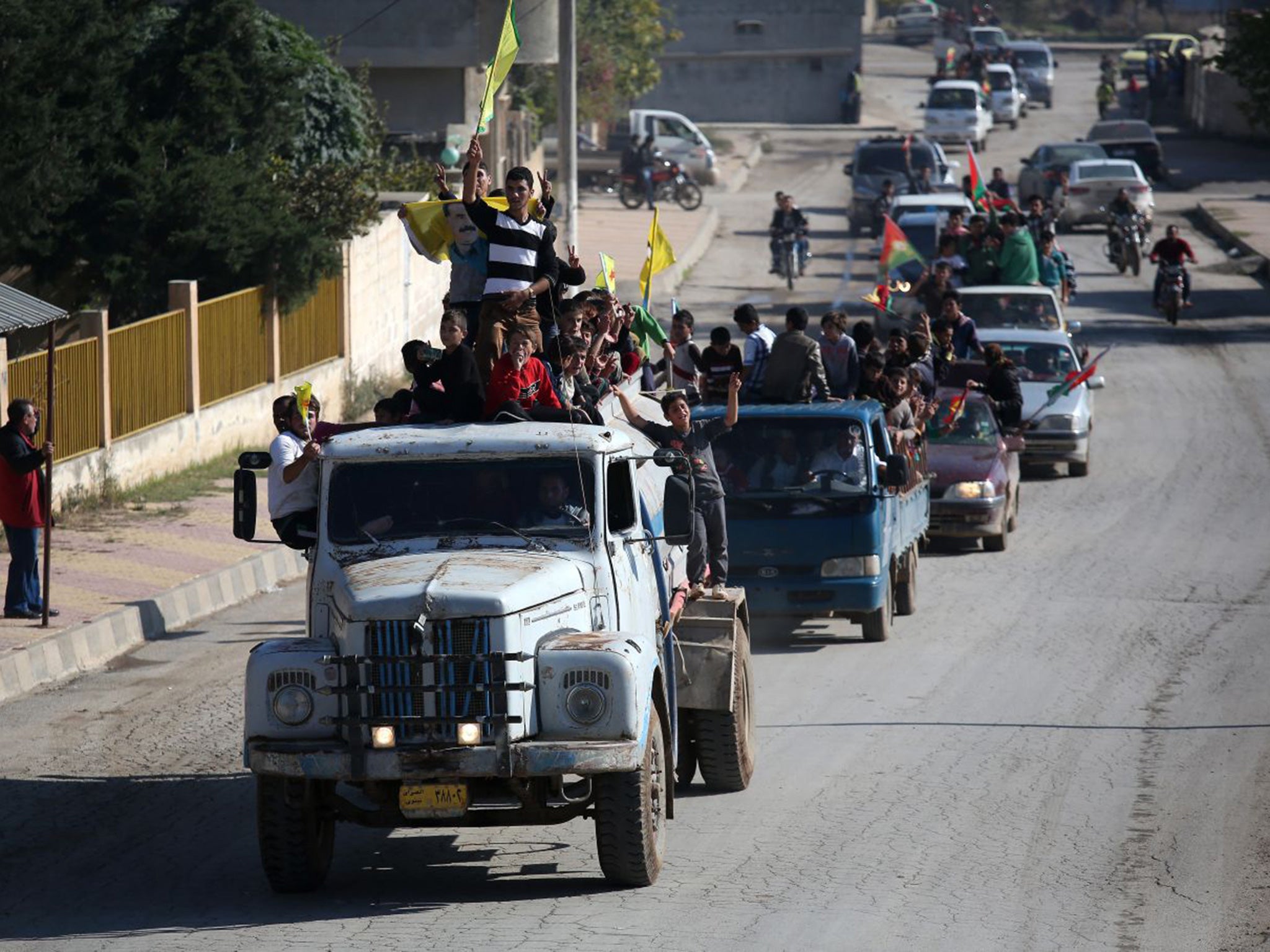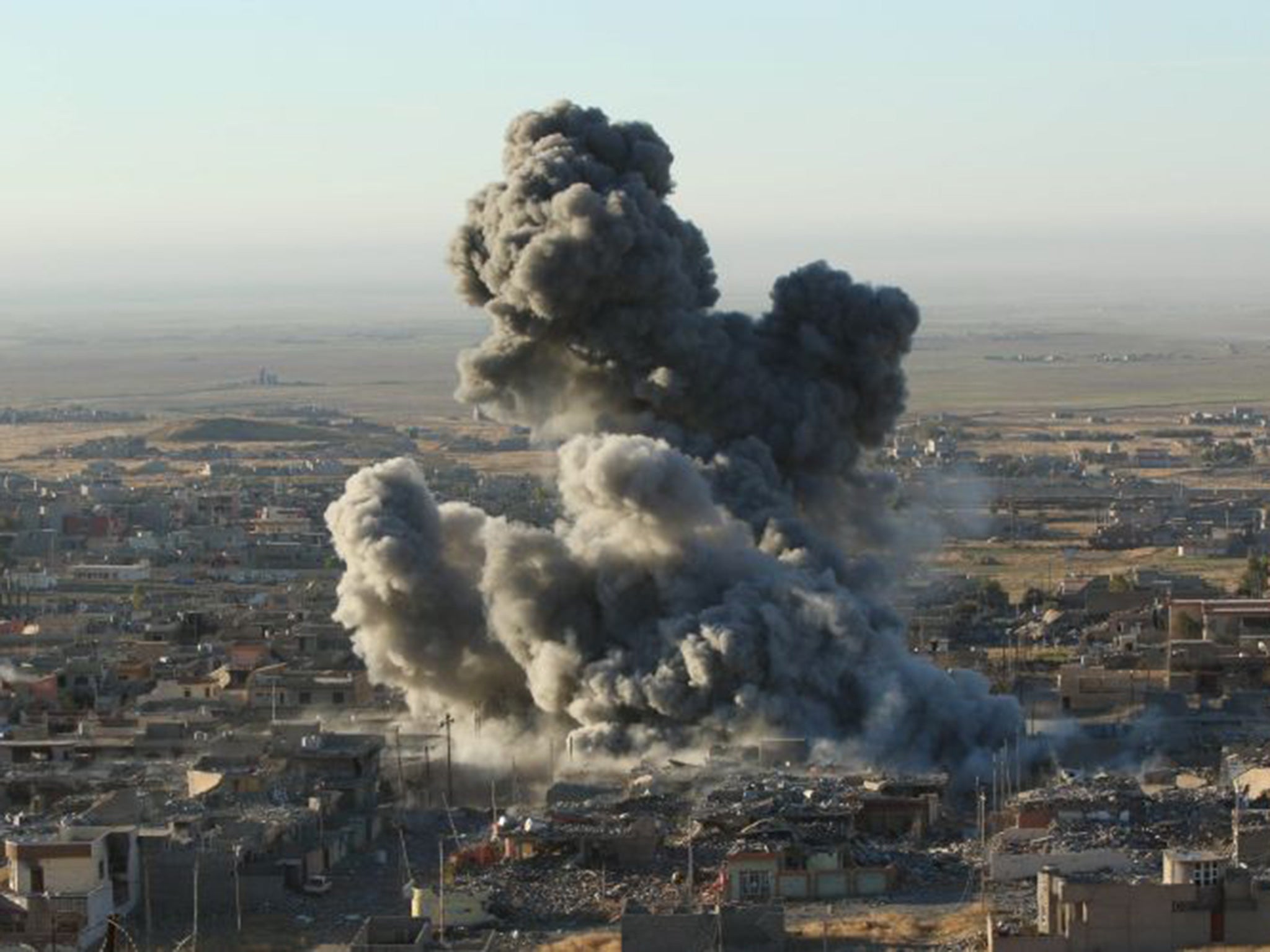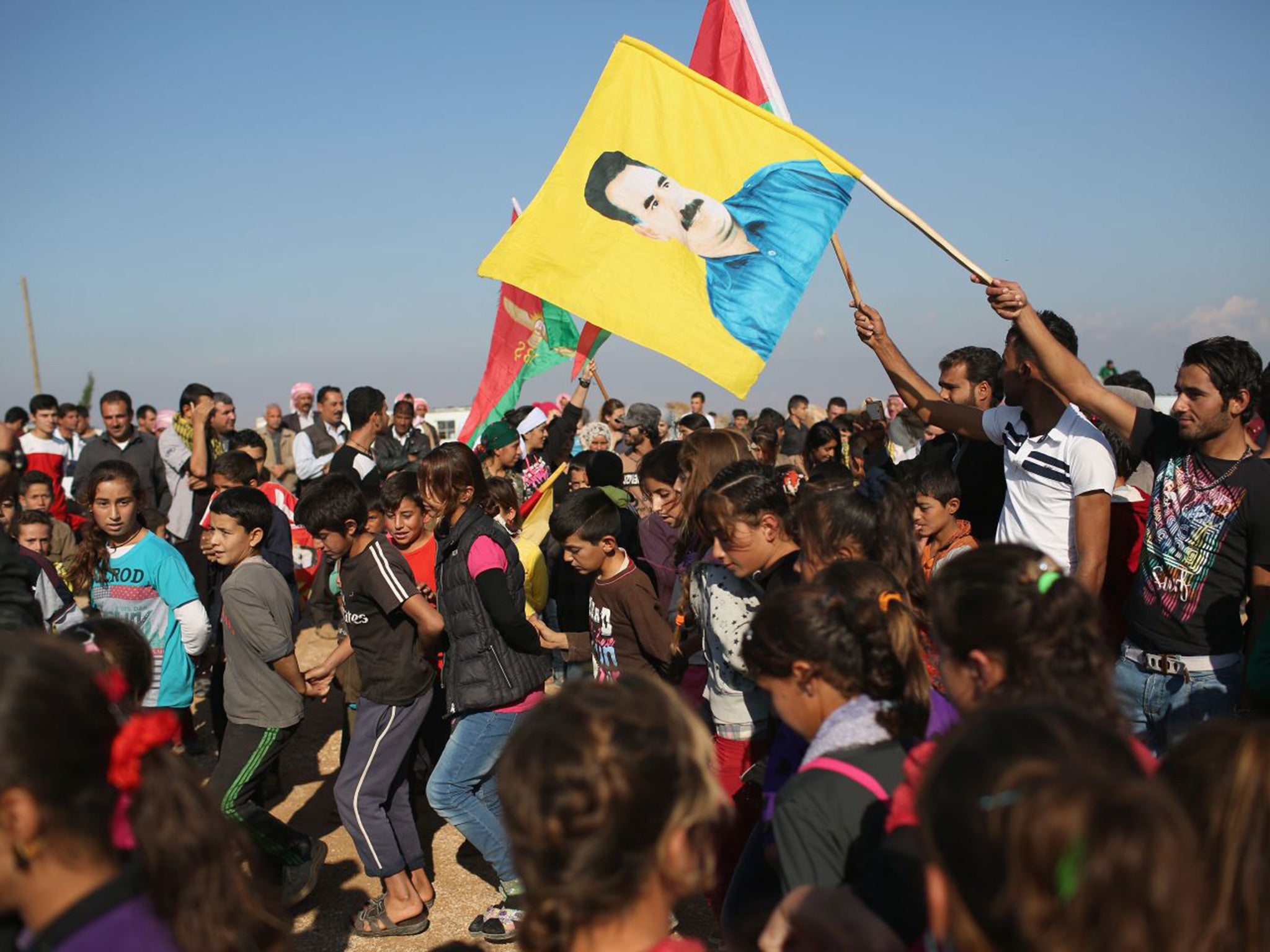Sinjar offensive: Recapture of key city opens the gate to Iraqi territory
Cathy Otten is the only journalist with access to the US-Kurdish control room in Irbil as the key city was retaken - but it was not all good news

Your support helps us to tell the story
From reproductive rights to climate change to Big Tech, The Independent is on the ground when the story is developing. Whether it's investigating the financials of Elon Musk's pro-Trump PAC or producing our latest documentary, 'The A Word', which shines a light on the American women fighting for reproductive rights, we know how important it is to parse out the facts from the messaging.
At such a critical moment in US history, we need reporters on the ground. Your donation allows us to keep sending journalists to speak to both sides of the story.
The Independent is trusted by Americans across the entire political spectrum. And unlike many other quality news outlets, we choose not to lock Americans out of our reporting and analysis with paywalls. We believe quality journalism should be available to everyone, paid for by those who can afford it.
Your support makes all the difference.On the morning of battle, the tension was palpable. The planning room in Irbil resounded with barked instructions in both Kurdish and English. Military specialists from the Kurdish peshmerga and their US allies filled every available seat, and the eight large screens splashed live pictures from the cameras mounted on surveillance drones hovering over Sinjar.
The men studied the screens for Isis targets and, once agreed and confirmed by drone footage or spotters on the ground, strikes were planned and GPS coordinates passed up from the battlefield to the room.
The resultant “splashes” of bombs falling and targets being destroyed soon followed.

This was the nerve centre of joint operations of US and Kurdish forces in their fight this week to retake Sinjar from Isis, which had enslaved and murdered thousands of the Iraqi Yazidi community whose fighters overran IS territory last year. The peshmerga forces were the muscle on the ground. The Americans were their eyes and, when the targets were agreed, their overwhelming force from the sky.
The battle captain from the US 82nd Airborne manned a “secret” phone which he used to call in GPS locations to another command room down the hall, where other members of the coalition spoke to the pilots in the sky above Iraq.
The operation to liberate Sinjar, which succeeded on 13 November when peshmerga forces raised the flag of the Kurdistan region on top of the central grain silo, allows the Kurds to consolidate their control and surround Isis in Mosul on three sides, ahead of a long-awaited offensive to retake that city. It was a success for the combined command. The gains, however, revealed the horror of the recent past. A mass grave believed to contain the bodies of 80 Yazidi women, murdered by Isis, was discovered on 14 November on the edge of the town. The ages of the victims are thought to range up to 80, mainly older victims. Younger Yazidi women were reportedly more likely to be sold as sex slaves.

Questions still remain about what the success means for the Yazidi community. One woman, Nadya, from the town of Gezerek, said that even if her home were liberated she would not be able to return. “We can no longer trust my neighbours,” she said, the pain of displacement and mass murder and rape of her people was written on her face as she sat in a tent secured to the barren mountain with rocks. Outside, the temperatures were plummeting.
A little way away from the tent where Nadya and nine members of her family were living, a group of special operations advisers from the international coalition were stationed, including Americans. They looked down on the city and the battlefield below where they were helping the Kurds to pick targets. But the strikes do not always have the desired outcome. The major said that "while most strikes accomplish the desired effect first time, it is not unheard of for us to restrike a target".
The joint forces, however, hope success here will be mirrored elsewhere in Iraq.
“All roads lead to Mosul,” said Major Thomas Campbell, public affairs officer with the Combined Joint Forces Land Component Command Iraq, as he indicated the wider military strategy in northern Iraq, with maps covering the control room. During the operations last week, the coalition carried out between 40 and 50 air strikes around Sinjar, and 250 strikes since October in northern Iraq in preparation for the offensive. Major Campbell said that by seizing Sinjar and cutting off the highway between Syria and Sinjar, “we believe that it is not going to be easy for [Isis] to get fighters and weapons into the country, as well as moving oil out for the black market to fund their operations”.

He acknowledged that there are other roads adjoining Isis territory in Iraq and Syria, but said that the seizure of parts of Highway 47 would still have a significant impact on the group’s movement.
The recapture of Sinjar also represents a public relations boost for the coalition, whose war against the militants seemed to be faltering earlier this year when Isis seized Ramadi in Iraq and Palmyra in Syria.
The Kurdish peshmerga are the ally of choice for the US, and the comradeship among those in the control centre was clearly on show. The men in the control centre were putting in long hours. At lunchtime during the Sinjar operation, Kurdish officials brought the US officers, too busy to leave their desks, boxes of pizza. “A taste of home,” one man said.
Isis captured Sinjar in August 2014 as it pushed deeper into northern Iraq, massacring and kidnapping the minority Yazidi population, which is nearly all now living in temporary shelters and camps scattered across the Kurdish region of Iraq. A smattering of tents line the roads of Sinjar mountain above the city, where the Kurdish peshmerga forces were fighting to reclaim their home. For many of them, the recapture of the town would be bittersweet. Homes would still be destroyed and the memory of Isis horrors inflicted on members of the minority religion, which IS brands as “devil worshippers”, would not so easily fade.
The monitoring group Airwars, which collates figures of casualties from the international coalition’s war against Isis, said on its website that of the thousands of air strikes carried out in Syria and Iraq since the war began, they have identified 187 alleged civilian casualty incidents and 10 cases of friendly fire, which could mean possible civilian casualties of 1,170 to 1,539.
The major said that the joint command centre had done everything possible to ensure civilian casualties were kept to a minimum, including employing a military lawyer who reviewed every target before the bombs were dropped.
Join our commenting forum
Join thought-provoking conversations, follow other Independent readers and see their replies
Comments